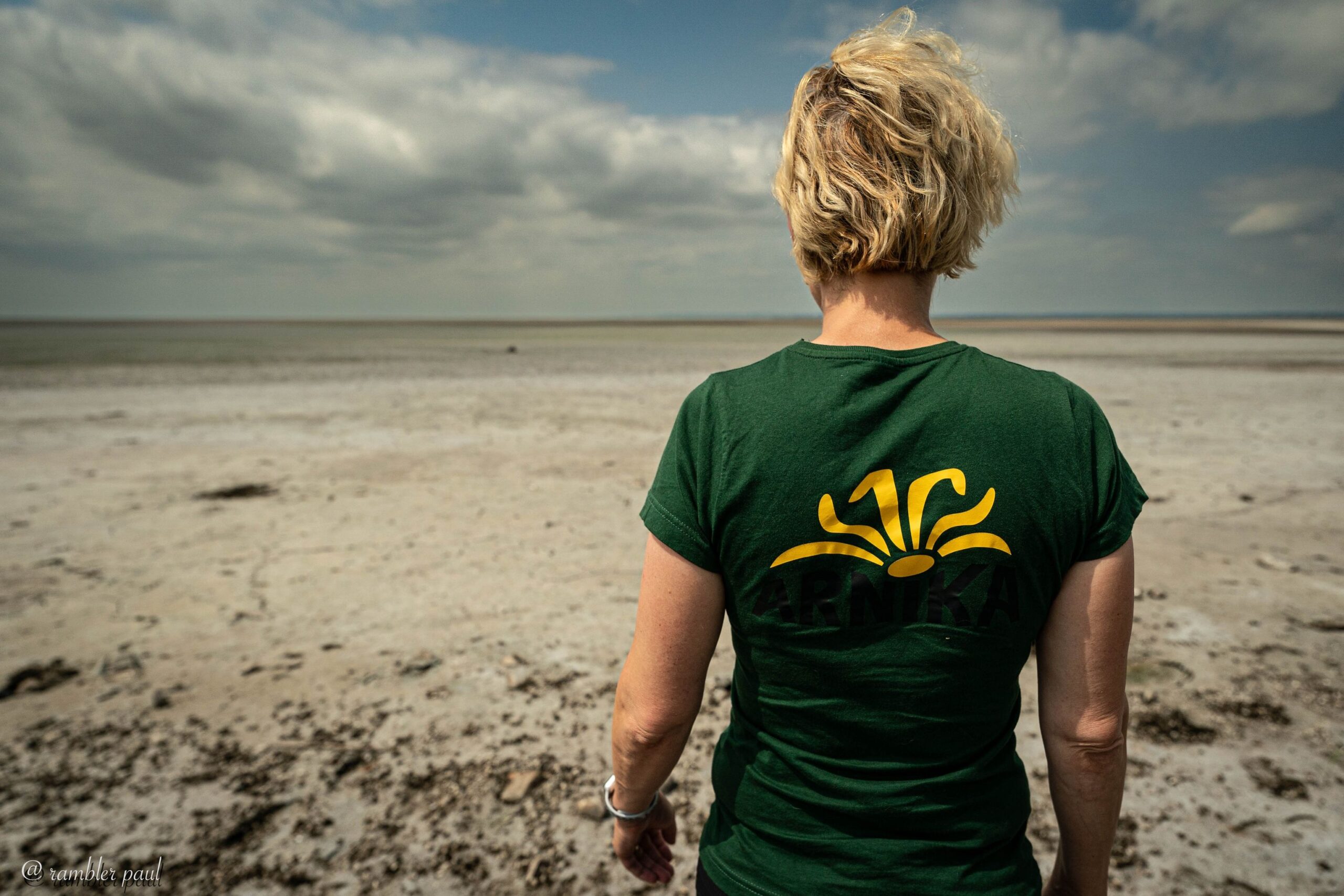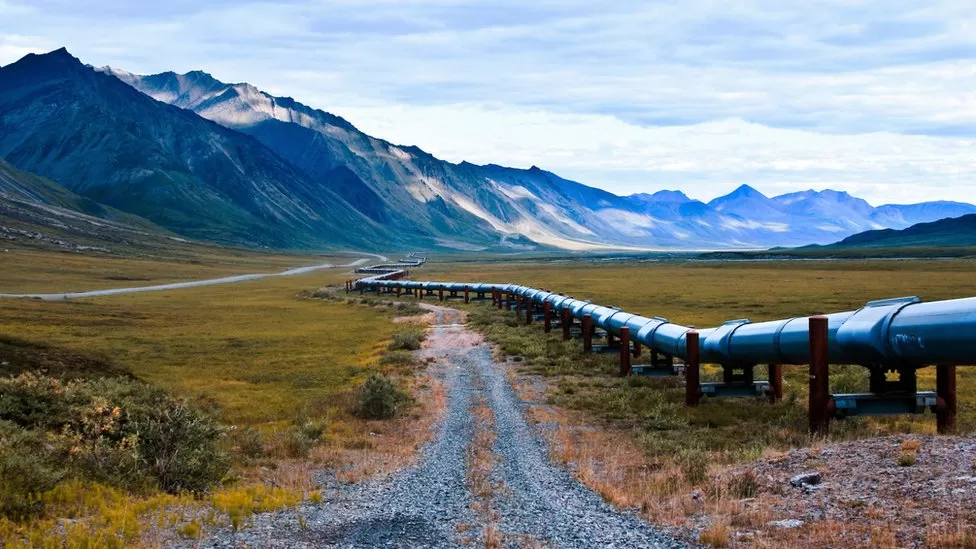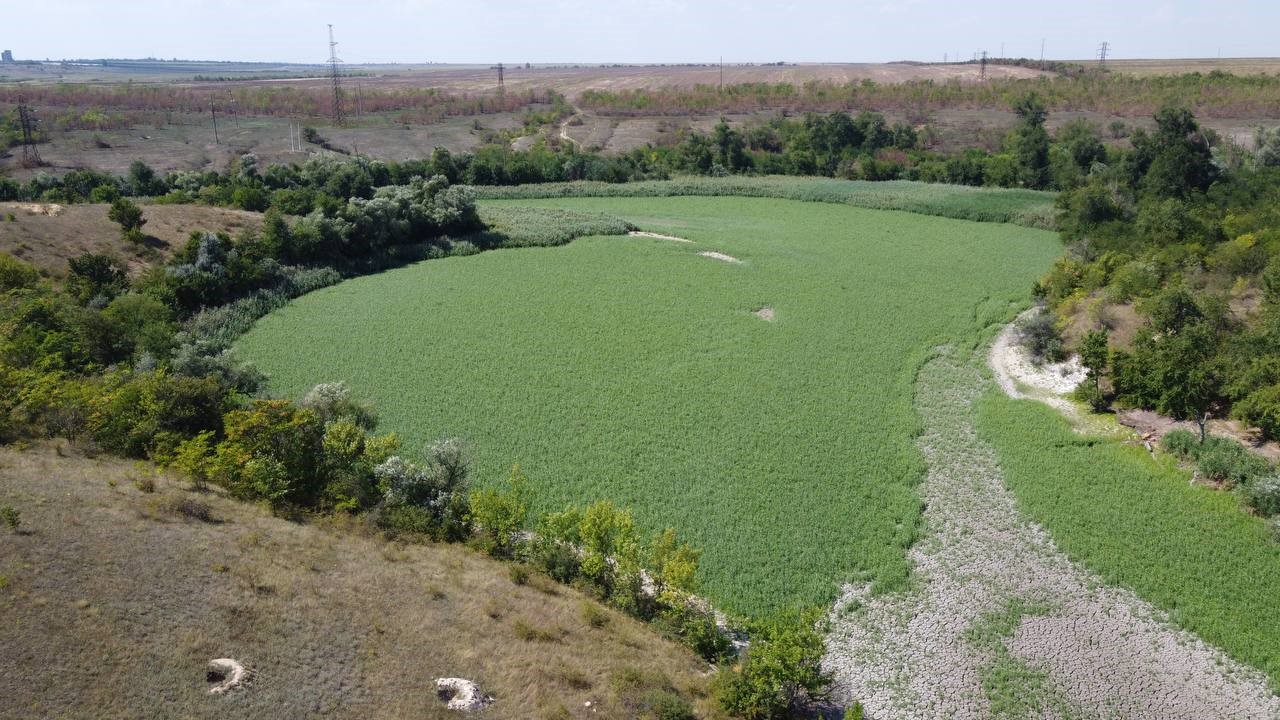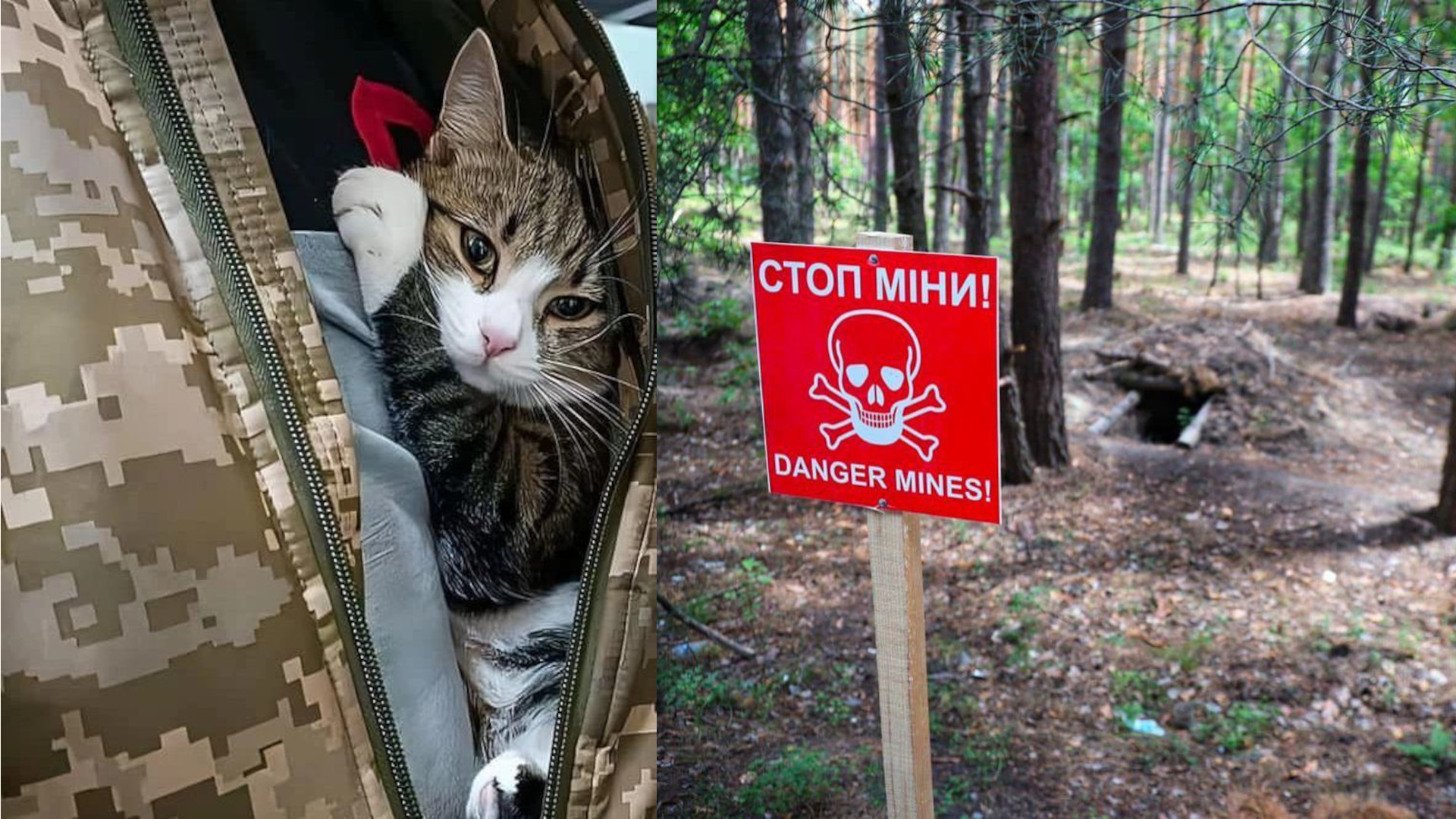Viktoria Hubareva
Analysis of sediments on the bed of the former Kakhovka Reservoir carried out by the Czech NGO Arnika has revealed the presence of heavy metals.
One of the most eye-catching and well-documented examples of the environmental damage caused by Russia in Ukraine was the destruction of the dam at Kakhovka Hydropower Plant in June 2023. This terrorist act by Russian Armed Forces led to mass flooding covering an area of 612 square kilometers (554.6 sq. km in Kherson region and 57.8 sq. km in Mykolaiv region), encompassing a vast area of natural zones in the Dnipro River delta, as well as settlements, ports, factories, and agricultural areas. The surging water finally destroyed the damaged dam and in the course of two weeks the reservoir completely disappeared, leaving 1,870 square kilometers of dry bed and small enclosed bodies of water. Now empty, the natural relief that existed before the reservoir was built became visible: the restoration of the Dnipro’s natural channel, a network of river branches that is now surrounded on all sides by a willow forest that is growing twice as fast as anywhere else in the world.
Read more:
One of the serious concerns associated with the Kakhovka Reservoir’s disappearance is pollution of bottom sediments by industrial and domestic wastewater.
The large industrial centers of Zaporizhzhia and Nikopol sit right on the banks of the reservoir, on either side of the city of Marhanets, with the cities of Dnipro and Kamianske a little further upstream. For more than 50 years, the industrial enterprises based in these cities have made the area one of the main centers of environmental pollution in Ukraine. This pollution can even be tracked online in satellite photographs. It is no surprise that an enormous stagnant water body, with large volumes of stationary water and a large quantity of accumulated silt deposits has become the site of a large-scale accumulation of pollutants from hazard classes I-III in the region. Around 80% of the surface of the reservoir bed was covered by a layer of silt up to 92 cm thick (17.6 cm on average). Given the size of the reservoir, these figures indicate a fairly large volume: 0.6 cubic kilometers, or 1/30 of the volume of the reservoir.
The situation began to change as the reservoir drained after the dam was sabotaged. The exposed bed of the reservoir guided the water flow into deeper areas, and subsequently, into the river channel — the most active water movement to occur in the former Kakhovka Reservoir for 69 years. As a result of the current, polluted silt and sediments – a significant portion of the contaminated silt, along with heavy metals and other waste – rose into the water column and followed it downstream, polluting the flood zone and the Black Sea downstream.
This led to a completely new situation in which no one knew how many pollutants remained at the bottom of the former reservoir or how safe it was.
In the first weeks after the water escaped from the reservoir, there was no indication that natural vegetation would fill the empty space so quickly, with many experts warning of the threat of “toxic dust storms.” But such fears proved to be unfounded. And although the contaminated substrate is now overgrown with young forest and the threat of hazardous substances spreading as a result of storms is now significantly reduced, it is crucial to understand how dangerous this substrate remains. Without such an understanding, it will be impossible to make decisions about the future of this area.
The Arnika study
In 2023, after the last traces of water had vanished from the former reservoir, opening up access to the now dried-out bed, Czech specialists collected a series of samples of bottom sediments from the Dnipro River in Zaporizhia, as well as Kherson further downstream. The samples were found to contain heavy metals, insecticides, organochlorine pesticides, and other harmful substances.
Marcela Chernokhova, coordinator of the Clean Air for Ukraine project, explained to UWEC how the research was carried out, what danger is posed by the substances found in the bottom sediments and what needs to be done to avoid harmful public health consequences.

Clean Air for Ukraine is a long-term international program conducted by the Czech public organization Arnika in cooperation with its Ukrainian partners.
“When we visited Zaporizhia for the first time after the Kakhovka disaster, the emotions were pretty strong and sharp. We took samples from the bottom of the former reservoir and saw a vast, boundless empty space. Words like “lunar landscape” and “apocalypse” describe what we remembered quite well. On the other hand, literally a few months later, when we visited the same place, there were already thickets of young willow there. Nature is already winning,” says Chernokhova.
In Zaporizhzhia and downstream in the Kakhovka Reservoir, Arnika specialists collected five samples of bottom sediments from the Dnipro River and two samples of soil from shell craters. Another sample of sediments from the Dnipro, which flooded the city in the aftermath of the disaster, was collected in Kherson.
Given the limited resources and difficulties in accessing some areas, the main objective of this study was to determine the level of risk and provide initial data for further discussions on the future of the Kakhovka dam and plans to eliminate the consequences of this disaster. A more detailed and comprehensive analysis would require a much larger number of samples to be taken, including taking measurements in areas that are currently inaccessible.
The list of dangerous substances detected in the collected samples is impressive: heavy metals, polycyclic aromatic hydrocarbons, non-polar extracted compounds, C10-C40 hydrocarbons, cyanides, polychlorinated biphenyls, hexachlorobenzene, pentachlorobenzene, hexachlorobutadiene, organochlorine compounds, polychlorinated naphthalenes poly- and perfluoroalkyl substances.
The pollution is the result of many years of industrial activity upstream from the reservoir. According to Chernokhova, the amount of pollutants exceeds the permissible limit.
“A total of ten samples were collected from the bottom of the reservoir, with four samples exceeding the maximum permissible concentrations for polyaromatic hydrocarbons. Two samples were found to have particularly high concentrations of petroleum hydrocarbons, one was found to have a high concentration of PCBs [polychlorobenzenes], and one was found to have a high concentration of DDT [dichloro-diphenyl-trichloroethane, a substance used as an insecticide and banned from use back in the 1990s], meaning it has remained in the sediments at the bottom of the reservoir since then. Some samples were found to have elevated levels of heavy metals, including mercury and arsenic, which can get into the food chain or the lungs,” Chernokhova notes.
The expert also added that she and her team plan to continue studying the situation. This June she visited Zaporizhzhia once again and collected samples following the shelling of the Dnipro Hydropower Plant. Arnika is assuming that the sediments will be contaminated with petroleum substances.
The damage inflicted on the structures of the Dnipro hydropower plant led to an increased discharge of water from the Dnipro Reservoir, located upstream from the former Kakhovka Reservoir. Media reported that the Dnipro had been polluted with oil products after the Dnipro hydropower plant was damaged in the spring of 2024. During this period, water levels were much higher than normal and it spilled across the former reservoir, watering young trees. Unfortunately, the former reservoir was also polluted with oil products, which covered an enormous area of water with a thin film.
Read more:
How to make the dry bed of Kakhovka reservoir safe
The exposed bed of the reservoir is a huge land resource for communities, and the people living nearby hope to use it for grazing livestock, growing vegetables, installing solar panels, recreation, and other purposes. Given the results of the analyses, such scenarios seem unrealistic. However, the authors of the study have not yet definitively concluded that these areas are unfit for use: more samples need to be taken from more places before any suitable conclusion can be made.
Only when the final results are known will it be possible to start talking about reclamation of these areas, cleaning and restoring them.
According to Chernokhova, the reservoir’s land can be used to mitigate the effects of climate change, conduct educational activities, and preserve rare species, as well as for many other useful and sustainable solutions.
“Some areas can become wetlands, while others will become home to organisms that need support and protection. The empty reservoir can be used for recreational activities, including hiking, birdwatching, and other outdoor pursuits. We recommend encouraging sustainable farming near the reservoir, in view of the fact that the same water source is no longer available. This will help restore groundwater supplies,” she explains.
For now, however, there are more urgent concerns, she argues. For example, local communities need to be informed about potential dangers, including contamination of drinking water. The introduction of water quality monitoring is recommended to solve these problems. For drinking water, this may involve installing temporary purification systems.
A report published as part of the project also contains recommendations for polluted land reclamation.
Chernokhova sees the most realistic scenario for such restoration, given the scale of pollution impacts and scarcity of resources, is to carry out phytomelioration (practices aimed at improving soil productivity and potential via the cultivation of selected crop species) of the most contaminated areas, which could threaten drinking water sources. However, one of the problems with phytomelioration is that while it can help remove heavy metals and persistent organic pollutants from the soil, the pollutants can still remain in plants.
Priority should be given to contaminated areas that threaten drinking water supplies. Given the limited resources available, it may be necessary to develop and implement cost-effective and locally viable remediation methods that are adapted to the types of contamination and environmental conditions downstream of the Kakhovka dam and reservoir.
UWEC Work Group expert Oleksiy Vasyliuk believes that the transfer of contaminated bottom sediments will have a big influence on future restoration plans for the whole area that suffered from the Kakhovka sabotage.
“Pollutants that were previously resting at the bottom of the reservoir now affect the environment over a much larger area. As soon as the water level in Kherson began to fall, contaminated silt created areas of very thick layers of sediment in the flood zone. It is not yet clear whether future use will be possible for a territory so polluted with heavy metals and other chemicals. It’s especially bad that the flood zone, where the silt settled, which until recently was safe for life, will be the most polluted,” says Vasyliuk.
He adds that the situation is no better in the marine environment of the Black Sea, where pollutants have settled on the bottom:
“Now heavy metals and other substances will accumulate in plankton and filter feeders (for example, in mussels, clams, sponges, and other marine organisms). This way, resilient pollutants enter the food pyramid and will eventually accumulate in the end-consumers of seafood: large predatory fish species, dolphins — and, of course, humans, which is alarming news.”
For now, however, the presence of Russian troops on the opposite bank of the Dnipro makes it impossible to carry out any activities on the land formerly occupied by the Kakhovka Reservoir, either within the zone hit by catastrophic flooding or in the Black Sea. The only method currently available is water quality monitoring.
Translated by Alastair Gill
Main image: Marcela Chernokhova (Arnica, Czech Republic) at the bottom of the drained Kakhovsky reservoir near Zaporizhzhia Source: Clean Air for Ukraine







